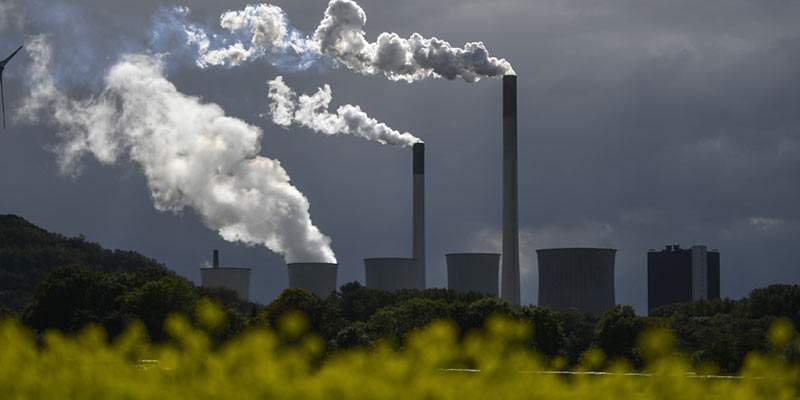- World
- Nov 04
Explainer / What is COP27?
• The 27th annual Conference of the 198 Parties of the UN Framework Convention on Climate Change, better known as COP27, will begin on November 6 in Egypt’s Sharm el-Sheikh.
• Heads of States, ministers and negotiators, along with climate activists, mayors, civil society representatives and CEOs will meet in the Egyptian coastal city of Sharm el-Sheikh for the largest annual gathering on climate action from November 6-18.
• US President Joe Biden, UK Prime Minister Rishi Sunak and more than 100 Heads of States are expected to attend the conference.
• COP27 will build on the outcomes of COP26 held in Glasgow last year to deliver action on an array of issues critical to tackling the climate emergency.
What is COP?
• The COPs are the biggest and most important annual climate-related conferences on the planet.
• In 1992, the UN organised the Earth Summit in Rio de Janeiro, Brazil, in which the UN Framework Convention on Climate Change (UNFCCC) was adopted and its coordinating agency — what we know now as the UN Climate Change secretariat — was put into place.
• In this treaty, nations agreed to “stabilise greenhouse gas concentrations in the atmosphere to prevent dangerous interference from human activity on the climate system”.
• Since 1994, when the treaty entered into force, every year the UN has been bringing together almost every country on earth for global climate summits or “COPs”, which stands for ‘Conference of the Parties’.
• Currently, there are 198 Parties (197 States and 1 regional economic integration organisation) to the United Nations Framework Convention on Climate Change.
• During these meetings, nations have negotiated various extensions of the original treaty to establish legally binding limits on emissions, for example, the Kyoto Protocol in 1997 and the Paris Agreement adopted in 2015, in which all countries agreed to step up efforts to try and limit global warming to 1.5°C above pre-industrial temperatures, and boost climate action financing.
• This year marks the 27th annual summit, or COP27.
• COP26 culminated in the Glasgow Climate Pact. Advancements were made to make the Paris Agreement fully operational, by finalising the details for its practical implementation, also known as the Paris Rulebook.
• Last year, during the UN Climate Change Conference COP26 in Glasgow, Scotland, all countries agreed to revisit and strengthen their climate plans, however, only 24 out of 193 nations submitted updated plans to the UN.
• Glasgow also saw many pledges made inside and outside the negotiation rooms regarding net-zero commitments, forests protection and climate finance, among many other issues.
What to expect in COP27?
• This year’s UN Climate Conference takes place against a backdrop of extreme weather events worldwide, an energy crisis propelled by the war in Ukraine, and scientific data reiterating that the world is not doing enough to tackle carbon emissions and protect the future of our planet.
• Faced with a growing energy crisis, record greenhouse gas concentrations, and increasing extreme weather events, COP27 seeks renewed solidarity between countries, to deliver on the landmark Paris Agreement, for people and the planet.
• According to the presidential vision statement, COP27 will be about moving from negotiations, and “planning for implementation” for all these promises and pledges made.
• According to experts, besides reviewing how to implement the Paris Rulebook, the conference will also see negotiations regarding some points that remained inconclusive after Glasgow.
• These issues include “loss and damage” financing so that countries at the frontlines of the crisis can deal with the consequences of climate change that go beyond what they can adapt to, and the fulfillment of the promise of $100 billion every year from adaptation finance, from developed nations, to low-income countries.
• The negotiations will also include technical discussions, for example, to specify the way in which nations should practically measure their emissions so there’s a level playing field for everyone.
• All these discussions will pave the way for the first Global Stocktake at COP28, which in 2023 will assess the global collective progress on mitigation, adaptation, and means of implementation of the Paris Agreement.
Objectives of COP27:
i) Mitigation: How are countries reducing their emissions?
Climate Change Mitigation refers to efforts to reduce or prevent the emission of greenhouse gases. Mitigation can mean using new technologies and renewable energy sources, making older equipment more energy efficient, or changing management practices or consumer behaviour.
Countries are expected to show how they are planning to implement the Glasgow pact call, to review their climate plans and create a work programme related to mitigation.
This means presenting more ambitious 2030 emissions targets, since UN Climate Change has said that current plans are still not enough to avoid catastrophic warming.
ii) Adaptation: How are countries going to adapt and help others do the same?
Climate change is here. Beyond doing everything we can to cut emissions and slow the pace of global warming, countries must also adapt to climate consequences so that they can protect their citizens. The fallout varies depending on location. It might mean the risk of more fires or floods, droughts, hotter or colder days or sea-level rise.
At COP26, delegates adopted a work programme on the global goal of adaptation established in the Paris Agreement. The plan was put in place to equip communities and countries with the knowledge and tools to ensure that adaptation actions they take, are indeed moving the world towards a more climate-resilient future.
The COP27 Presidency expects nations to capture and assess their progress toward enhancing resilience and helping the most vulnerable communities. This means countries making more detailed and ambitious commitments in the adaptation components of their national climate plans.
Last year, developed countries agreed to at least double finance for adaptation, and many stakeholders are calling for even greater levels of adaptation funding to match the amounts that are now being spent on mitigation, as established in the Paris Agreement. This will definitely be a big conversation topic at Sharm el-Sheikh.
iii) Climate Finance: The elephant that never leaves the negotiation room
Climate finance will be a top theme once again at COP27, many finance-related discussions are already on the agenda, with developing countries making a loud call for developed countries to reassure sufficient and adequate financial support, particularly to the most vulnerable.
There may be discussions about the yearly $100 billion promise by developed nations that isn’t being delivered. At COP15 in Copenhagen in 2009, developed countries had committed to jointly mobilise $100 billion per year by 2020 to help developing countries tackle the effects of climate change. But official reports still show that this target is being missed. Experts expect COP27 to actually make this pledge a reality finally, in 2023.
India’s expectations from COP27
• Union Environment Minister Bhupender Yadav said India will demand action in terms of climate finance, technology transfer and capacity building from developed countries to help developing countries fight climate change.
• India will seek clarity as to what is being termed as climate finance — whether it is grants, loans or subsidies.
• India will also push for a new collective quantified goal (NCQG) for climate finance — a key accompanying decision to the 2015 Paris Agreement — from a floor of $100 billion per year.
• This year, India updated its Nationally Determined Contributions (NDCs) in keeping with the promises made by Prime Minister Narendra Modi at COP26 in Glasgow.
• According to the updated NDCs, India now stands committed to reducing emissions intensity of its GDP by 45 per cent by 2030, from 2005 level, and achieving about 50 per cent cumulative electric power installed capacity from non-fossil fuel-based energy resources by 2030.
• To further a healthy and sustainable lifestyle, ‘LIFE - Lifestyle for Environment’ as a key to combating climate change has been added to India's NDC.
• NDCs are national plans and pledges made by countries to limit global temperature rise to well below 2 degrees Celsius, preferably to 1.5 degrees Celsius.
Manorama Yearbook app is now available on Google Play Store and iOS App Store


